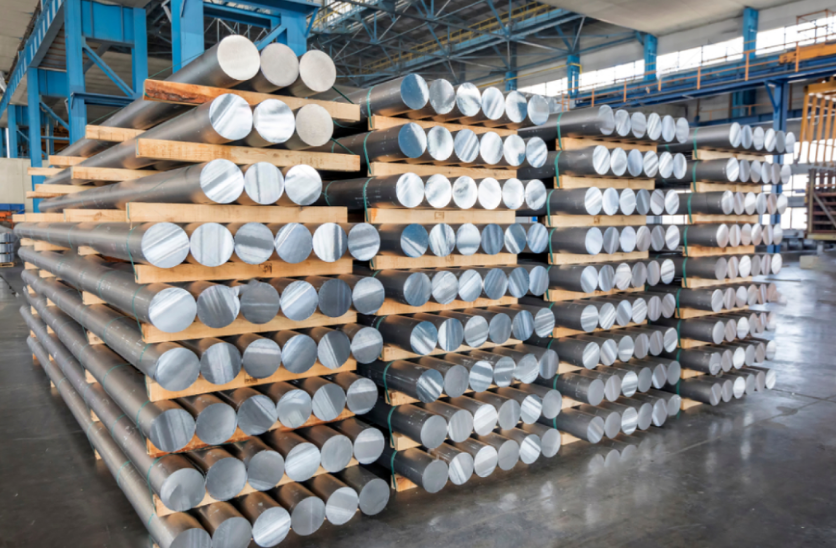In Brief: Titanium Grade 5, universally known as Ti-6Al-4V or "Ti 6-4," is an alpha-beta titanium alloy that represents the gold standard in high-performance metals. It accounts for nearly 50% of all titanium used globally, primarily due to its exceptional balance of high strength, low weight, and superior corrosion resistance.
In the world of advanced engineering materials, few alloys command the respect and widespread application of Ti-6Al-4V. Developed for the demanding requirements of the aerospace industry, this alloy has since become indispensable across medical, marine, and high-performance automotive sectors. Understanding its unique properties is key to unlocking its potential in mission-critical designs.

The designation Ti-6Al-4V is a direct reference to its nominal composition:
Titanium (Ti): Approximately 90%
Aluminum (Al): 6% (An alpha stabilizer, increasing strength and reducing density)
Vanadium (V): 4% (A beta stabilizer, improving ductility and allowing for heat treatment)
This specific combination classifies Ti-6Al-4V as an alpha-beta alloy. This means its microstructure contains a mix of both the hexagonal close-packed (HCP) alpha phase and the body-centered cubic (BCC) beta phase. This dual-phase structure is the secret to its versatility, allowing its properties to be finely tuned through heat treatment and processing.
Ti-6Al-4V is not defined by a single property but by the synergy of several:
| Property | Typical Value (Annealed) | Engineering Significance |
|---|---|---|
| Density | 4.43 g/cm³ (0.16 lbs/in³) | Approximately 60% of the density of steel, leading to a superior strength-to-weight ratio. |
| Tensile Strength | 895 MPa (130,000 psi) minimum | High load-bearing capacity, essential for structural components in aircraft and racing. |
| Corrosion Resistance | Excellent | Forms a stable, protective oxide layer (TiO₂) instantly, making it highly resistant to seawater, chlorides, and body fluids. |
| Operating Temperature | Up to ~400°C (750°F) | Maintains strength at elevated temperatures, crucial for jet engine compressors and hot airframe sections. |
| Biocompatibility | Excellent | Non-toxic and non-allergenic, allowing for direct integration with human bone and tissue (osseointegration). |
While Ti-6Al-4V offers unmatched performance, its use comes with specific manufacturing challenges that contribute to its higher cost compared to steel or aluminum:
The raw material itself is more expensive due to the complex Kroll process required to extract pure titanium from its ore. Additionally, the alloying elements (Aluminum and Vanadium) add to the base cost.
Ti-6Al-4V is notoriously difficult to machine. Its low thermal conductivity means heat generated during cutting does not dissipate quickly, concentrating at the cutting tool. This causes rapid tool wear and requires slower cutting speeds, specialized tooling, and high-pressure coolant systems, all of which drive up the final part cost.
Achieving the optimal properties often requires specific heat treatments, such as **annealing** (to improve ductility) or **solution treatment and aging** (to maximize strength). These processes must be tightly controlled to manage the alpha-beta microstructure.
The unique combination of properties makes Ti-6Al-4V the material of choice for demanding environments:
Ti-6Al-4V is the backbone of modern flight. It is used extensively in:
Jet Engines: Compressor blades, discs, and rings in the cooler sections.
Airframes: Structural components, landing gear parts, and fasteners where high strength-to-weight is paramount.
Spacecraft: Cryogenic fuel tanks and pressure vessels due to its excellent performance at extreme temperatures.
Its biocompatibility and durability are life-changing:
Orthopedics: Primary material for hip and knee joint replacements, as well as bone plates and screws.
Dental: Used for dental implant posts that fuse directly with the jawbone.
Surgical Tools: Lighter, non-magnetic, and highly corrosion-resistant instruments.
In high-performance applications, Ti-6Al-4V provides a competitive edge:
Racing Engines: Connecting rods and valves to reduce reciprocating mass and increase engine speed.
Marine: Components for deep-sea exploration and saltwater environments where steel would quickly corrode.
Ti-6Al-4V is far more than just a strong metal; it is a meticulously engineered alloy that offers a rare blend of mechanical, chemical, and thermal advantages. While its manufacturing presents challenges, the performance gains it delivers in aerospace, medical, and high-performance sectors solidify its position as the undisputed King of Titanium Alloys.